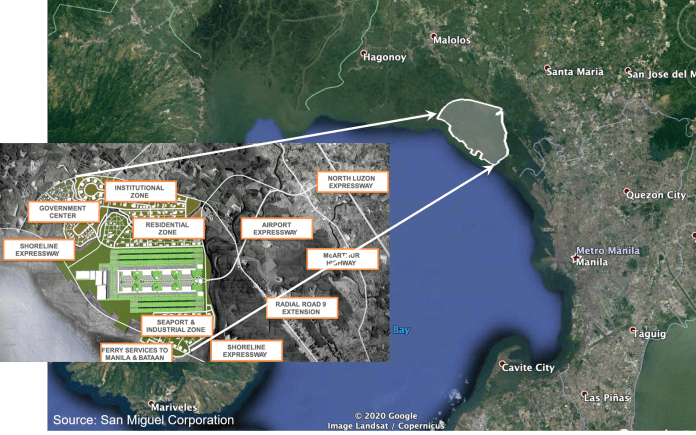Pro-environment activists in the Philippines warned of the possible impact of the construction of a new international airport north of the national capital.
The group Kalikasan People’s Network for the Environment lambasted the Senate’s “rushed approval” this week of a 50-year franchise granted to a corporation that proposed the project.
The new airport project aims to decongest Manila’s main entry and exit point for air travelers.
Activists, however, said it will result in further ecological imbalance and humanitarian crisis.
The US$15-billion airport development project, which is initially planned to commence this year, is located on the coastal areas of Bulacan province.
The airport is one of the flagship infrastructure projects of the government’s “Build, Build, Build” program.
Leon Dulce, national coordinator of Kalikasan People’s Network for the Environment, said the Senate approval of the project came “without so much an ounce of scientific consideration.”
He said the legislators did not take into consideration the communities that will be “condemned to a future of rising seas, sinking land, and worsened floods.”
Dulce said the proposed 2,500-hectare international airport reclamation project, also known as the Bulacan Aerotropolis, will affect at least a million people across the towns and cities of Bulacan.
“A crucial problem would be the proposed infrastructure’s conflicting land use with the last vestiges of the once vast mangrove forests covering Northern Manila Bay,” he said.
Dulce noted that the wetlands, which are threatened to be destroyed, “have long served as the roosting sites for thousands of migratory birds.”
A recent study conducted by the University of the Philippines Institute of Environmental Science and Meteorology projected that less than one percent of Manila Bay’s original mangrove forest cover, once a sprawling 75,000 to 90,000, is presently left at less than 1,000 hectares.
A LiCAS.news source said that on October 10, men with chainsaws attempted to cut mangroves in Taliptip village as “part of the preparation for the project.”
Village officials and residents, however, refused to allow the men to cut the mangroves.
At least 700 families living in the backwater fishing villages, where the international airport will soon rise, will be displaced, said Dulce.
He urged the national government to review the project before any move that will allow the start of its construction.
He claimed that the government did not hold “legitimate public consultations.”
Once the franchise is granted to the company, the project will be one of the largest and widest tax-free projects granted by the government.
The franchise will also grant the proponent of the project a 50-year tax break that is expected to cost the government up to US$2.4 billion.
The group Youth Strike 4 Climate Philippines called on the Philippine government to “discontinue” the project and “uphold the democratic rights” of the people living in the coastal district.
The group said the country must learn from the “unsustainable and avoidable mistakes of the past” that led to the deteriorating condition of biodiversity.









